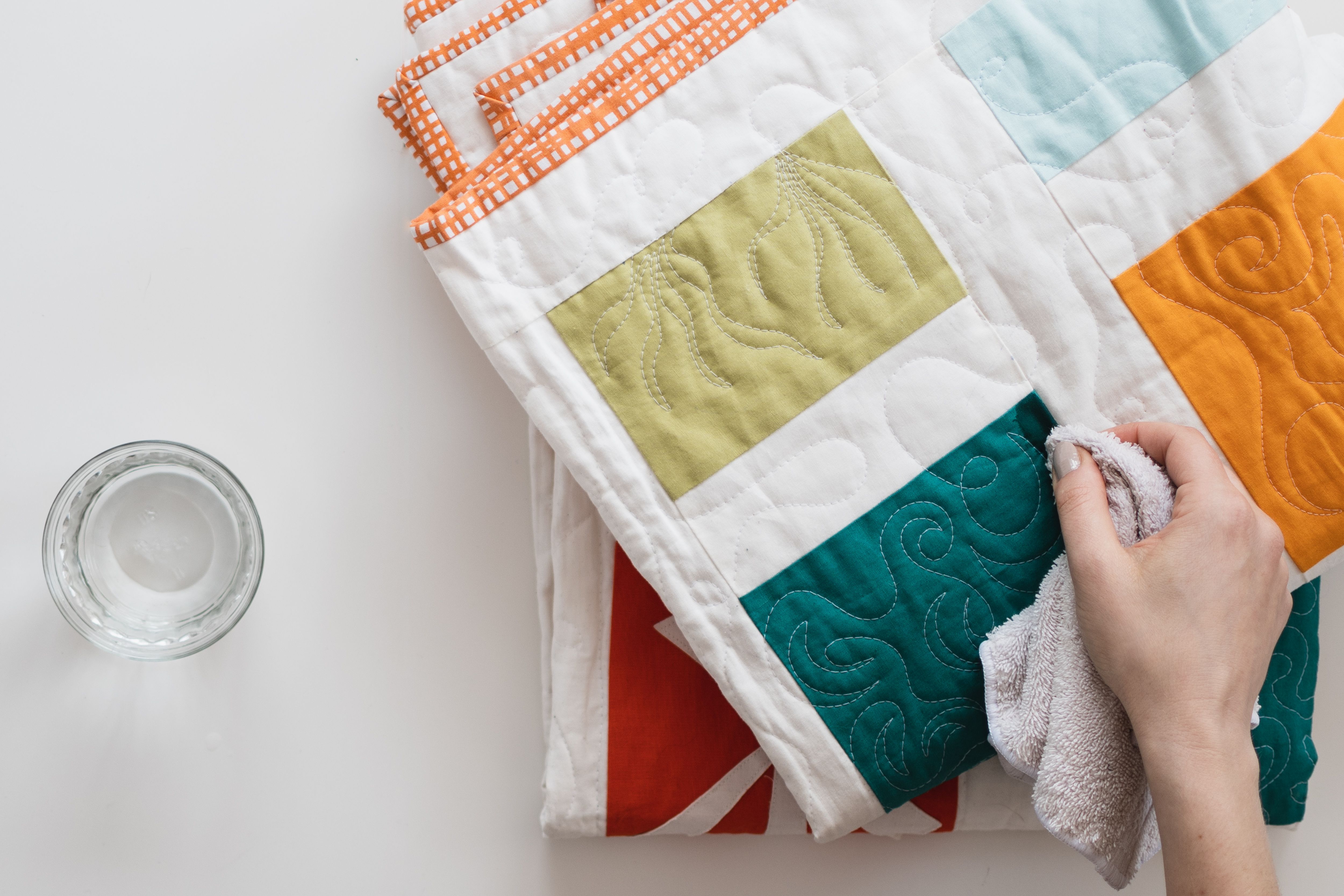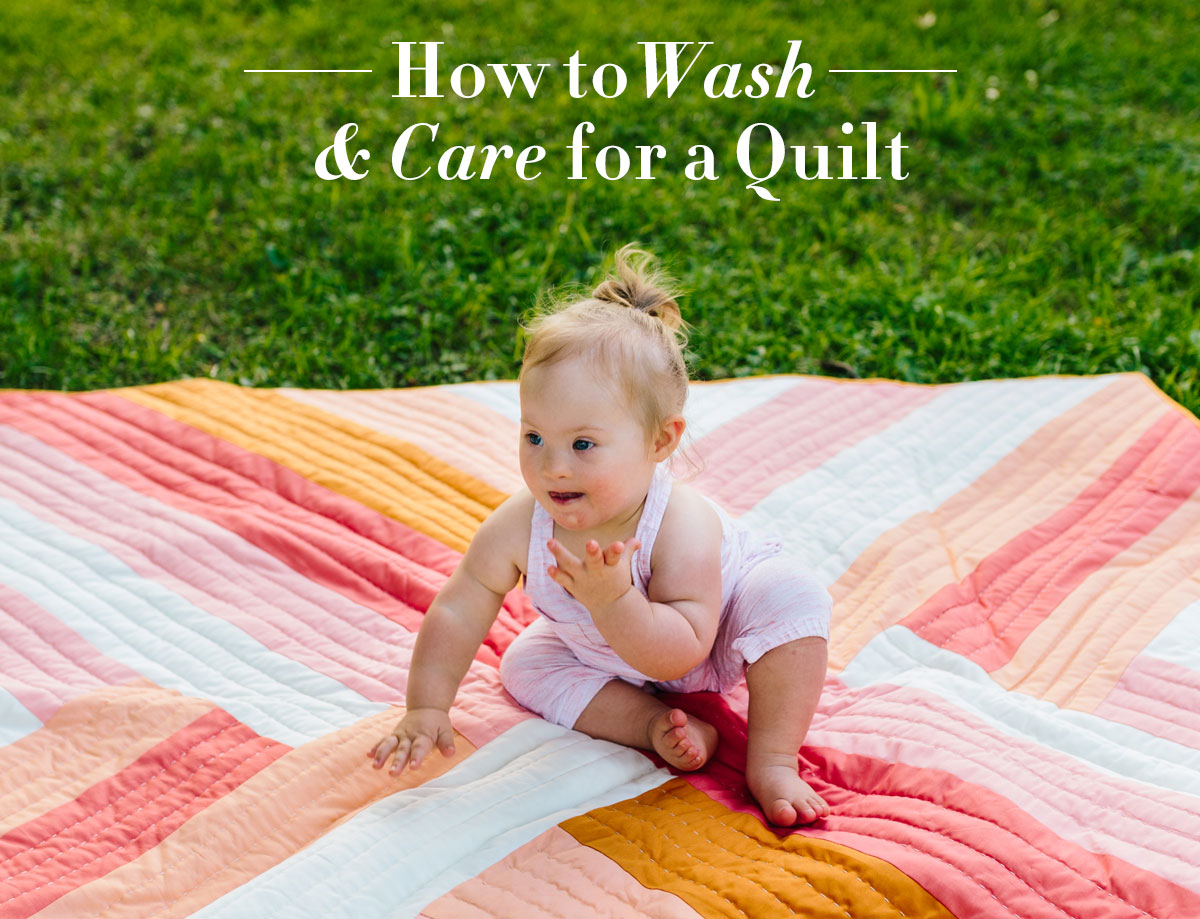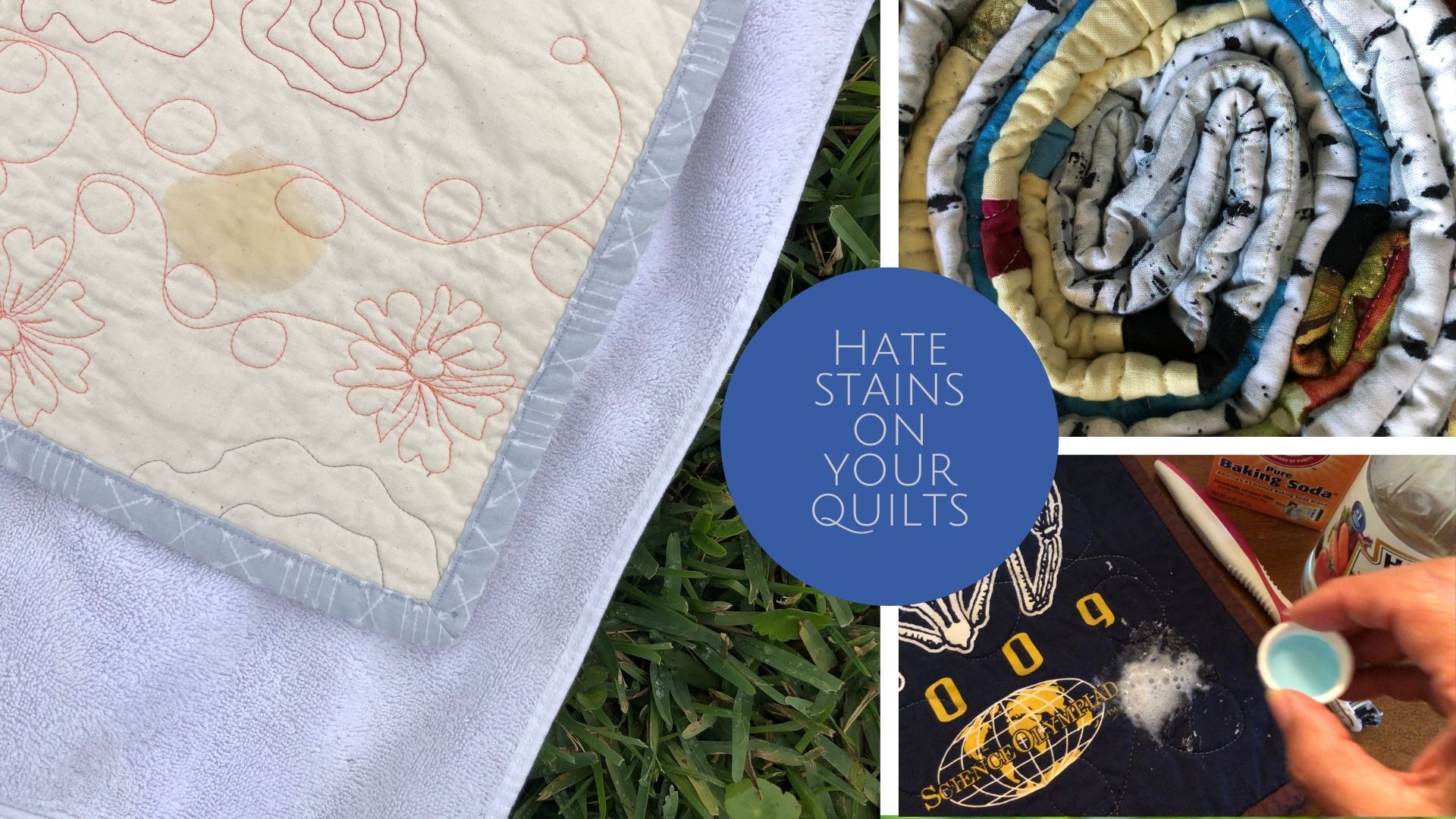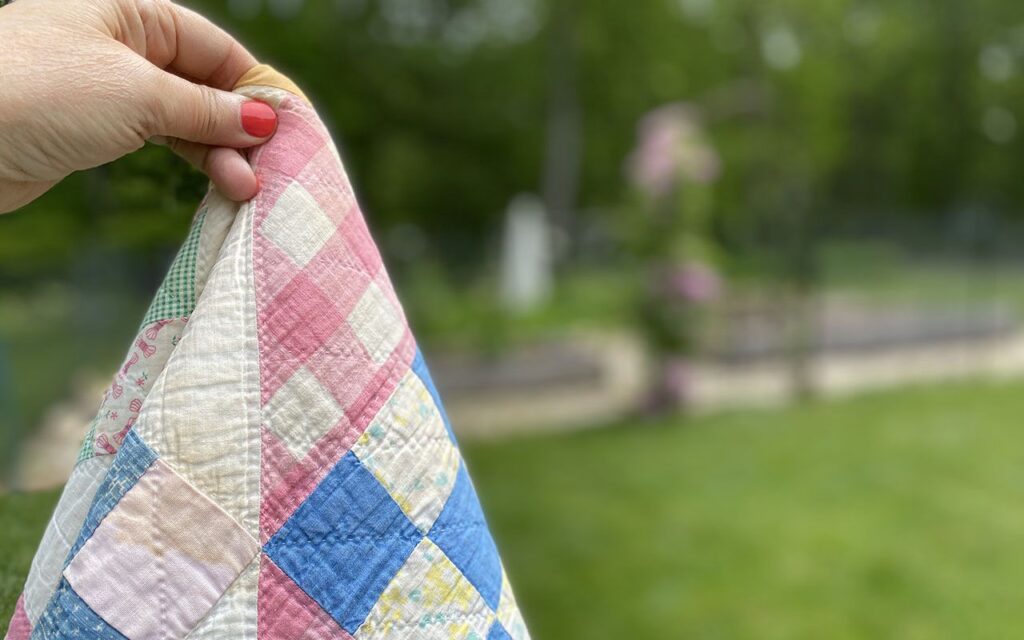Do you need to know how to wash a quilt? With proper care, your quilt can stay beautiful for years to come. This step-by-step guide will help you clean and preserve your quilt. From selecting a gentle cycle on your washing machine to drying your quilt, following these steps will ensure your quilt remains in pristine condition.
What You Need to Know Before Washing a Quilt

How to Wash a Quilt for the First Time
Washing a quilt for the first time can be a daunting task. Before you start the process, there are a few things you should keep in mind. To ensure your quilt lasts for years to come, it is important to know what materials it is made of and how to properly care for it. Knowing these things will help you make sure to wash your quilt correctly and keep it looking its best.
What Temperature to Wash Quilt
When washing a quilt, you should always use cold water. Hot water can cause the fabric to shrink or fade, resulting in a quilt that is not as vibrant and colorful as it once was. If the quilt is heavily soiled or stained, you can use a mild detergent and a gentle cycle.
When Washing Quilt Delicate or Regular
When washing a quilt, it is important to use the delicate or gentle cycle. This will help ensure that the fabric does not become damaged in the wash. Additionally, it is best to use a mild detergent, as strong detergents can harm the fabric. You should also avoid using fabric softener and bleach, as these can damage the quilt.
How to Wash a Quilt

Step-by-Step Guide for Cleaning and Preserving Your Quilt
Step 1: Check the label on your quilt. Most quilts are machine-washable, but some may require dry cleaning.
Step 2: Set the washing machine to a gentle cycle, and use a mild detergent.
Step 3: Choose a warm water temperature and add a teaspoon of white vinegar to the rinse cycle to help preserve the colors.
Step 4: Dry the quilt on a low heat setting in the dryer, and use a few tennis balls in the drum to fluff it up and help prevent clumping.
Step 5: If your quilt is too large for the washing machine, take it to a laundromat that has large-capacity machines or use a professional laundry service.
Step 6: To prevent wrinkles, hang the quilt in a cool, dry place.
Washing a quilt is a great way to keep it clean and looking its best. To ensure the best results, always follow the care instructions on the label and use a warm water temperature when washing. Using a mild detergent and a teaspoon of white vinegar in the rinse cycle will help preserve the colors and keep your quilt in perfect condition.
How to Dry a Quilt

When washing quilt delicate or regular, it is important to dry it properly.
- After washing, gently squeeze the quilt in a towel to remove excess water.
- Lay the quilt flat on a clean dry surface. Do not hang it up.
- Allow the quilt to air dry away from direct sunlight or heat.
- If the quilt is damp, place a dry towel underneath and on top of the quilt.
- Change the towels every few hours until the quilt is dry.
- Once the quilt is dry, give it a light shake and fluff it up to remove any wrinkles.
When drying a quilt, it is important to not use a dryer as this can cause it to shrink and damage the fabric. If it is necessary to use a dryer, use the lowest heat setting and check the quilt frequently to make sure it is not shrinking.
What to Do When You Cannot Wash Your Quilt

- Vacuum the quilt to remove dust and dirt. Use the upholstery attachment and move it in a back-and-forth motion.
- Brush the quilt by hand with a soft bristled brush or a lint roller.
- Spot clean any stains with a mild detergent or a specialised upholstery cleaner.
- Hang the quilt outside in the fresh air and direct sunlight.
- Treat odours with baking soda, leaving it on for several hours before vacuuming away.
- Dry the quilt using a dryer or air drying. When using a dryer, use a low heat setting and a few clean tennis balls to fluff the quilt while it dries.
How to Show Quilts Without Getting Them Dirty

- Keep the quilt away from direct sunlight: Sunlight can cause fading and yellowing of the fabric, so avoid displaying your quilt in direct sunlight. You can hang it in a room with natural lighting, or put it in a windowless room with artificial light.
- Clean the area before displaying: Before displaying your quilt, make sure the area is clean. Vacuum any dust that has accumulated and wipe the area with a damp cloth to remove any dirt or debris.
- Use a protective cover: If you are displaying a quilt on a bed or sofa, use a protective cover such as a quilt sleeve or quilt bag. This will help keep the quilt clean and free from dust and dirt.
- Place the quilt on a wall: Hang the quilt on a wall instead of displaying it on furniture. This will keep it away from dust and dirt and will also help preserve the quilt for a longer period of time.
- What to do when you cannot wash your quilt: If you don’t have the time to wash your quilt or the fabric is too fragile to machine wash, you can spot clean it instead. Use a soft cloth and mild detergent to gently scrub away any dirt or stains. Allow the quilt to air dry. Do not use a dryer, as this could shrink or damage the fabric.
How to Disinfect a Home Made Quilt
- Vacuum the Quilt: Vacuum the quilt to remove dirt, dust, and debris, before washing the quilt. You can use the brush attachment to ensure that you don’t miss any spots.
- Submerge the Quilt in Hot Water: Submerge the quilt in hot water in a large tub or sink. Hot water is effective at killing bacteria and germs. Let the quilt soak for at least 30 minutes.
- Add Disinfectant: Add a mild disinfectant such as bleach or vinegar to the water. Let the quilt soak for another 15 minutes.
- Rinse the Quilt: Rinse the quilt in cold water to remove any residue from the disinfectant. Let the quilt soak for an additional 15 minutes.
- Hang the Quilt to Dry: Hang the quilt in a sunny spot to dry. Make sure not to hang it in direct sunlight as this can cause fading.
To avoid getting your quilt dirty in the first place, you can use a quilt hanger or display stand. This will allow you to show off your quilt without having to worry about it getting dirty.
Frequently Asked Questions
Is it safe to machine wash a quilt?
Yes. Machine washing a quilt is generally safe, as long as the quilt is of good quality, and the instructions are followed carefully. It is best to use a gentle cycle and a mild detergent, and to avoid overloading the machine. A load should never exceed half of the machine’s capacity. To avoid possible damage, it is also important to check the quilt for any loose seams or buttons before washing. It is also important to make sure the quilt is completely dry before it is stored.
How do I know when a quilt needs to be cleaned?
A quilt should be cleaned when it becomes visibly soiled, stained, or begins to smell. If a quilt is used in a pet-friendly environment, it is a good idea to clean it regularly, even if it does not appear to be visibly soiled. If the quilt is passed down from generation to generation, it is also recommended to clean it before use, to remove any dust, dirt, and allergens.
How do I dry a quilt after washing?
Air Dry:
- Hang the quilt on a clothesline or lay it out flat on a drying rack.
- Allow the quilt to dry in a well-ventilated area away from direct sunlight.
- Rotate the quilt occasionally to ensure even drying.
Tumble Dry:
- Tumble-dry the quilt on a low heat setting.
- Add a few tennis balls or dryer balls to the dryer to help fluff the quilt.
- Check the quilt every few minutes and remove it as soon as it’s dry.
What types of detergents are best for washing a quilt?
Detergents specially designed for washing delicate items are best for washing a quilt. They are usually color-safe and contain fewer chemicals than regular detergents. Some of these detergents also contain fabric softeners that can help keep your quilt soft. Here are some specific types of detergents that are great for washing a quilt:
- Gentle detergent – A gentle detergent can gently clean your quilt without damaging the fabric. Look for one that is free of harsh chemicals and fragrances.
- Dye-free detergent – A dye-free detergent will help keep the colors of your quilt from fading.
- Soap nuts – Soap nuts are an all-natural, biodegradable detergent that is gentle on fabrics.
- Liquid castile soap – Liquid castile soap is another all-natural, biodegradable detergent that can be used to wash your quilt.
Are there any special techniques for spot cleaning a quilt?
-
1. Check the care label for cleaning instructions specific to the fabric.
2. Spot treat the stain with a mild laundry detergent and cold water, using a soft cloth to rub in a circular motion.
3. Rinse the area thoroughly with warm water to remove the detergent residue.
4. Dry the quilt with a fan or by laying flat in a warm area.
5. If any stain remains, repeat the above steps until it has been removed.
6. If the stain still won’t budge, try using a gentle spot cleaner specifically designed for quilts.
Conclusion
Washing a quilt requires some extra care and attention, but with the right instructions, it can be done safely and effectively. When washing a quilt, it is important to check the fabric for colorfastness, use cold water and a mild detergent, and air-dry the quilt on a flat surface. Following these steps will help preserve the quilt and keep it looking like new for years to come.






